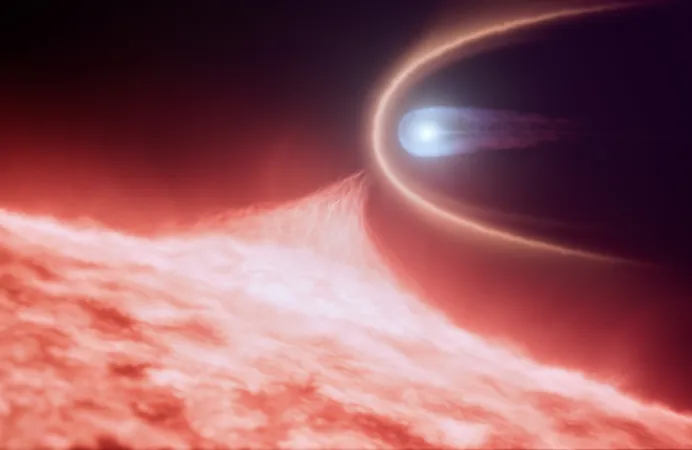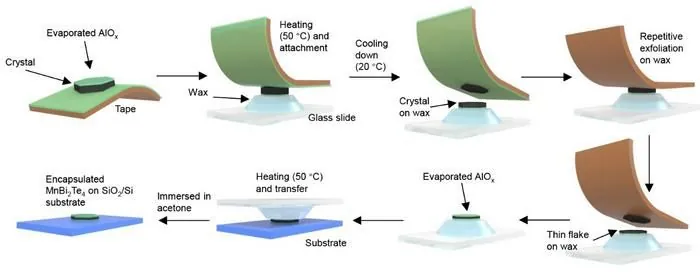
Unveiling the Secrets of WD 0525+526: A White Dwarf Born from Stellar Catastrophe
2025-08-17
Author: Arjun
A Surprising Cosmic Discovery
Astronomers have uncovered a stunning revelation about a star known as WD 0525+526: what first appeared to be a typical white dwarf is actually the remnant of a violent star collision. This eye-opening finding emphasizes that not everything in the universe is as ordinary as it seems.
What is a White Dwarf?
White dwarfs represent the final evolutionary stage of stars like our Sun. These dense stellar remnants can contain more mass than the Sun while being no larger than Earth. Most white dwarfs form when a single star exhausts its nuclear fuel and collapses. However, a rare and more dramatic scenario occurs when two stars collide and merge, resulting in an ultra-massive white dwarf.
The Story of WD 0525+526
Located 128 light-years away, WD 0525+526 is about 20% more massive than our Sun. Though it visually resembles any other white dwarf, the Hubble Space Telescope's advanced ultraviolet capabilities revealed a surprising twist: carbon in its atmosphere—something not typically found in such stars. Normally, a white dwarf’s atmosphere consists mainly of hydrogen and helium, with its carbon and oxygen layers buried deep beneath.
The Mysteries Unfolded
The merger of two stars alters the game completely. The explosive aftermath strips away much of the outer hydrogen and helium, allowing carbon to migrate from the core to the surface. Researchers utilized Hubble’s Cosmic Origins Spectrograph to identify the subtle presence of carbon in this star’s atmosphere, which was only a fraction—about 100,000 times less—than what is seen in other merger remnants.
A Unique Mechanism Revealed
Curiously, WD 0525+526 is not just hot; it’s extremely hot, with temperatures nearing 21,000 kelvins (around 37,000 degrees Fahrenheit). At this temperature, typical convection wouldn't work to push carbon to the outer layers. Instead, a gentler process called semi-convection is likely at play, which is effective enough to allow small amounts of carbon to surface.
A Glimpse Into the Future
This discovery builds upon previous findings from the 2019 ESA Gaia mission, which hinted at a group of uncommon blue white dwarfs, several of which turned out to be merger products. WD 0525+526 now stands as the hottest and most massive of this intriguing group.
The tantalizing prospect remains that many more collision survivors might be hidden among the vast cosmic data, waiting to be uncovered. Researchers aim to explore the prevalence of carbon white dwarfs and to better understand the hidden stellar mergers among the ‘normal’ white dwarf family.
Final Thoughts
The implications of this research are significant for our understanding of stellar evolution and the pathways leading to supernova events. Published in the journal Nature Astronomy, this groundbreaking study prompts an exciting new chapter in our exploration of the cosmos.




 Brasil (PT)
Brasil (PT)
 Canada (EN)
Canada (EN)
 Chile (ES)
Chile (ES)
 Česko (CS)
Česko (CS)
 대한민국 (KO)
대한민국 (KO)
 España (ES)
España (ES)
 France (FR)
France (FR)
 Hong Kong (EN)
Hong Kong (EN)
 Italia (IT)
Italia (IT)
 日本 (JA)
日本 (JA)
 Magyarország (HU)
Magyarország (HU)
 Norge (NO)
Norge (NO)
 Polska (PL)
Polska (PL)
 Schweiz (DE)
Schweiz (DE)
 Singapore (EN)
Singapore (EN)
 Sverige (SV)
Sverige (SV)
 Suomi (FI)
Suomi (FI)
 Türkiye (TR)
Türkiye (TR)
 الإمارات العربية المتحدة (AR)
الإمارات العربية المتحدة (AR)